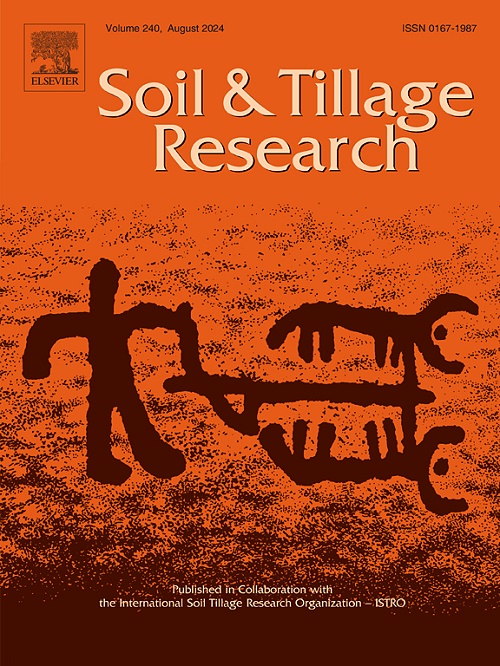Impacts of tillage treatments on soil physical properties and maize growth at two sites under different climatic conditions in black soil region of Northeast China
IF 6.1
1区 农林科学
Q1 SOIL SCIENCE
引用次数: 0
Abstract
The escalating soil degradation and consequent decline in crop yield are critical factors jeopardizing the sustainable development of agriculture in the black soil region of Northeast China. Conservation tillage offers a potential solution for protecting this vital soil resource, but its effect on soil physical properties and crop yields in different climatic regions is still debated. Therefore, it is essential to determine the effects of different tillage treatments on soil quality and maize yield across black soil region under different climatic conditions. This study conducted a two-year field experiment at two sites (Hailun, HL; Gong Zhuling, GZL) under two climatic conditions (cool and warm) in Northeast China to evaluate the impact of no tillage (NT), rotary tillage (RT), deep ploughing (DP), and strip tillage (ST) on soil physical properties and maize growth. The results indicate that at the cooler HL site, DP effectively decreased soil bulk density (BD) and improved soil air capacity (AC), air permeability (AP), available water capacity (AWC), and soil temperature during the early stage of maize growth, which facilitated maize emergence and root growth, resulting in a 10.5 % yield increase compared to RT. However, NT reduced maize emergence due to lower soil temperatures, leading to a yield reduction (-2.6 %) compare to RT. Conversely, at the warmer and windy GZL site, DP showed limited improvement in soil physical properties, resulting in the lowest yield among the four treatments. NT significantly enhanced soil aeration and water retention capacity compared to DP, achieving higher yield comparable to RT. Notably, ST demonstrated good adaptability at both sites, achieving the highest yield increase (+11.1 % compared to RT) especially at the HL site, indicating its potential as a strategy to balance crop yield and soil conservation. Our findings suggest that DP or ST is preferable for the HL region, while conservation tillage (NT and ST) is more suitable for the GZL region. This study provides valuable insights into selecting appropriate tillage treatments based on local soil and climate conditions in the Northeast China.
求助全文
约1分钟内获得全文
求助全文
来源期刊

Soil & Tillage Research
农林科学-土壤科学
CiteScore
13.00
自引率
6.20%
发文量
266
审稿时长
5 months
期刊介绍:
Soil & Tillage Research examines the physical, chemical and biological changes in the soil caused by tillage and field traffic. Manuscripts will be considered on aspects of soil science, physics, technology, mechanization and applied engineering for a sustainable balance among productivity, environmental quality and profitability. The following are examples of suitable topics within the scope of the journal of Soil and Tillage Research:
The agricultural and biosystems engineering associated with tillage (including no-tillage, reduced-tillage and direct drilling), irrigation and drainage, crops and crop rotations, fertilization, rehabilitation of mine spoils and processes used to modify soils. Soil change effects on establishment and yield of crops, growth of plants and roots, structure and erosion of soil, cycling of carbon and nutrients, greenhouse gas emissions, leaching, runoff and other processes that affect environmental quality. Characterization or modeling of tillage and field traffic responses, soil, climate, or topographic effects, soil deformation processes, tillage tools, traction devices, energy requirements, economics, surface and subsurface water quality effects, tillage effects on weed, pest and disease control, and their interactions.
 求助内容:
求助内容: 应助结果提醒方式:
应助结果提醒方式:


